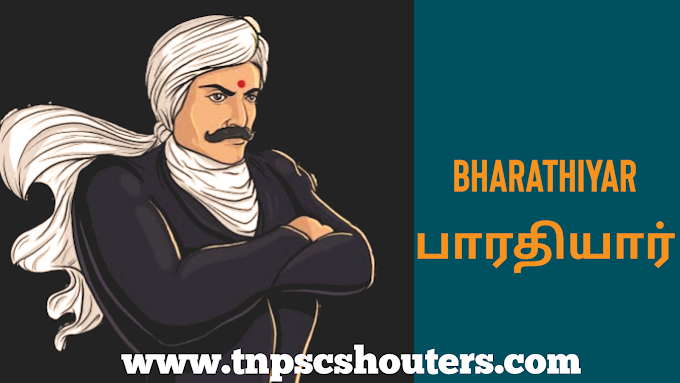மூத்த குடிமகன் என்று அழைக்கப்படுபவர் யார்?
- சட்டத்தின்படி, "மூத்த குடிமகன்" என்பது அறுபது வயது அல்லது அதற்கு மேற்பட்ட வயதை எட்டிய இந்திய குடிமகனாக இருப்பவர்.
- மக்கள்தொகை கணக்கெடுப்பு 2011 இன் படி இந்தியாவில் கிட்டத்தட்ட 104 மில்லியன் முதியவர்கள் (60 வயது அல்லது அதற்கு மேற்பட்டவர்கள்) உள்ளனர்;
- 53 மில்லியன் பெண்கள் மற்றும் 51 மில்லியன் ஆண்கள். ஐக்கிய நாடுகளின் மக்கள் தொகை நிதியம் மற்றும் ஹெல்ப் ஏஜ் இந்தியா வெளியிட்டுள்ள அறிக்கை, 2026 ஆம் ஆண்டுக்குள் முதியோர்களின் எண்ணிக்கை 173 மில்லியனாக உயரும் என்று எதிர்பார்க்கப்படுகிறது.
- 2011-2036 இந்தியா மற்றும் மாநிலங்களுக்கான மக்கள்தொகை கணிப்புகள் குறித்த தொழில்நுட்பக் குழுவின் அறிக்கையின்படி, 2021 ஆம் ஆண்டில் இந்தியாவில் கிட்டத்தட்ட 138 மில்லியன் முதியோர்கள் உள்ளனர் (67 மில்லியன் ஆண்கள் மற்றும் 71 மில்லியன் பெண்கள்) மேலும் மேலும் 56 மில்லியன் முதியவர்கள் அதிகரிக்கும் என எதிர்பார்க்கப்படுகிறது. 2031 இல் நபர்கள்.
- முதியோர்களின் பங்கு மற்றும் அளவு இரண்டும் காலப்போக்கில் அதிகரித்து வருகின்றன.
- 1961 இல் 5.6% ஆக இருந்த விகிதம் 2011 இல் 8.6% ஆக அதிகரித்துள்ளது. இந்த விகிதம் 2021 இல் 10.1% ஆகவும், மேலும் 2031 இல் 13.1% ஆகவும் அதிகரிக்க வாய்ப்புள்ளது. ஆண்களுக்கு இது 8.2% ஆக குறைவாக இருந்தது, அதே சமயம் பெண்களுக்கு இது 8.2% ஆக இருந்தது. 9.0%
- மக்கள்தொகை கணக்கெடுப்பு 1991 வரை, வயதான பெண்களின் எண்ணிக்கை வயதான ஆண்களின் எண்ணிக்கையை விட அதிகமாக இருந்தது குறிப்பிடத்தக்கது.
- இருப்பினும், கடந்த இரண்டு தசாப்தங்களில், இந்த போக்கு தலைகீழாக மாறியுள்ளது மற்றும் வயதான ஆண்களின் எண்ணிக்கை வயதான பெண்களை விட அதிகமாக உள்ளது. மேலும், 2031ல் ஆண்களின் எண்ணிக்கையை விட வயதான பெண்களின் எண்ணிக்கை அதிகமாகும் என்று கணிக்கப்பட்டுள்ளது.
- கிராமப்புற மற்றும் நகர்ப்புறங்களைப் பொறுத்தவரை, 2011 மக்கள் தொகை கணக்கெடுப்பின்படி, 71% முதியோர் கிராமப்புறங்களில் வசிக்கின்றனர், 29% நகர்ப்புறங்களில் உள்ளனர்.
- 2011-2036ஆம் ஆண்டுக்கான இந்தியா மற்றும் மாநிலங்களுக்கான மக்கள்தொகைக் கணிப்புகள் குறித்த தொழில்நுட்பக் குழுவின் அறிக்கையின்படி, 21 முக்கிய மாநிலங்களின் முதியோர் மக்கள்தொகை குறித்த மாநில வாரியான தரவுகள், அதன் மக்கள்தொகையில் (16.5%) முதியோர்களின் அதிகபட்ச விகிதத்தில் கேரளம் உள்ளது என்பதைத் தெரிவிக்கிறது. நாடு (13.6%), இமாச்சலப் பிரதேசம்
- (13.1%), பஞ்சாப் (12.6%) மற்றும் ஆந்திரப் பிரதேசம் (12.4%) 2021 இல் உள்ளது. மாறாக, பீகார் (7.7%) மாநிலங்களில் விகிதாச்சாரம் குறைவாக உள்ளது, அதைத் தொடர்ந்து உத்தரப் பிரதேசம் (8.1%) மற்றும் அசாம் (8.2%) )
- 2014-18 ஆம் ஆண்டில் பிறக்கும் போது பெண்களின் ஆயுட்காலம் 70.7 ஆகவும் ஆண்களுக்கு 68.2 ஆகவும் இருந்தது. 60 வயதில் சராசரியாக 18.2 ஆண்டுகள் (ஆண்களுக்கு 17.4 மற்றும் பெண்களுக்கு 18.9) மற்றும் 70 வயதில் 11.6 ஆண்டுகள் (ஆண்களுக்கு 11.1 மற்றும் பெண்களுக்கு 12.1) எனக் கண்டறியப்பட்டது.
- பிறக்கும் போது கேரளாவில் அதிக ஆயுட்காலம் உள்ளது, அதைத் தொடர்ந்து பஞ்சாப் மற்றும் மகாராஷ்டிரா உள்ளன. எஸ்ஆர்எஸ் அறிக்கை 2014-18ன் படி கேரளாவில் பிறக்கும் போது ஆயுட்காலம் முறையே 72.5 ஆண்டுகள் மற்றும் ஆண் மற்றும் பெண்களுக்கு 77.9 ஆண்டுகள் ஆகும்.
- 2018 ஆம் ஆண்டில், 60 - 64 வயதுக்குட்பட்ட 1000 மக்கள்தொகைக்கு வயது குறிப்பிட்ட இறப்பு விகிதம் கிராமப்புறங்களில் 20.4 ஆகவும், நகர்ப்புறங்களில் 17.7 ஆகவும் இருந்தது. 60 - 64 வயதுக்குட்பட்டவர்களுக்கு 19.5 ஆக இருந்தது. பாலின ரீதியாக, ஆண்களுக்கு 22.2 ஆகவும், பெண்களுக்கு 16.7 ஆகவும் இருந்தது.
- முதியோர் சார்பு விகிதம் 1961 இல் 10.9% இல் இருந்து 2011 இல் 14.2% ஆக உயர்ந்தது மேலும் இந்தியா முழுமைக்கும் 2021 மற்றும் 2031 இல் முறையே 15.7% மற்றும் 20.1% ஆக அதிகரிக்கும் என்று கணிக்கப்பட்டுள்ளது.
- பெண்கள் மற்றும் ஆண்களுக்கு, விகிதத்தின் மதிப்பு 2011 இல் 14.9 % மற்றும் 13.6% ஆக இருந்தது மற்றும் திட்டமிடப்பட்ட சார்பு விகிதம்
- 2021 இல் பெண் மற்றும் ஆண் முறையே 14.8% மற்றும் 16.7%.
- 2017-18 ஆம் ஆண்டில் பொருளாதார ரீதியாகச் சார்ந்திருக்கும் முதியவர்களில், கிராமப்புறம் மற்றும் நகர்ப்புறங்களில் அவர்கள் முக்கியமாக தங்கள் சொந்தக் குழந்தைகளால் அவர்களின் மனைவி, பேரக்குழந்தைகள் மற்றும் பிறரால் நிதியுதவி பெறுவது கவனிக்கப்பட்டது. வயதான பெண்களின் விஷயத்தில், அதிகமாகவோ அல்லது குறைவாகவோ ஒத்த முறை காணப்படுகிறது
- காலமுறை தொழிலாளர் படை கணக்கெடுப்பு (PLFS), 2018-19, 60-64 வயதுக்குட்பட்ட 65% வயதான ஆண்களும் 18% வயதான பெண்களும் பொருளாதார நடவடிக்கைகளில் ஈடுபட்டுள்ளனர். இருப்பினும், கிராமப்புற மற்றும் நகர்ப்புறங்களில் பரந்த வேறுபாடு உள்ளது.
- கிராமப்புறங்களில், 72% வயதான ஆண்களும், 21% வயதான பெண்களும் பொருளாதார நடவடிக்கைகளில் ஈடுபட்டுள்ளனர், நகர்ப்புறங்களில், இது வயதான ஆண்களில் 51% மற்றும் வயதான பெண்களில் 10% மட்டுமே.
- அதேபோன்று, 65 வயது மற்றும் அதற்கு மேற்பட்ட வயதினரில், வயதான ஆண் மற்றும் பெண்களின் பொருளாதார நடவடிக்கைகளில் பங்கேற்பது மிகவும் குறைந்த அளவில் காணப்படுகிறது.
- முதியவர்களிடையே கல்வியறிவு பெற்றவர்களின் சதவீதம் 1991 இல் 27% இல் இருந்து 2011 இல் 44% ஆக அதிகரித்துள்ளது. வயதான பெண்களின் கல்வியறிவு விகிதம் (28%) வயதான ஆண்களின் கல்வியறிவு விகிதத்தில் (59%) பாதிக்கும் குறைவாக உள்ளது.
- வயதானவர்களிடையே மிகவும் பொதுவான ஊனம் என்பது லோகோமோட்டர் இயலாமை மற்றும் செவித்திறன் குறைபாடு மற்றும் பார்வை குறைபாடு ஆகும்.
- 60 - 64 வயதுக்குட்பட்டவர்களில், 76% பேர் திருமணமானவர்கள், 22% பேர் விதவைகள். மீதமுள்ள 2% பேர் திருமணமாகாதவர்கள் அல்லது விவாகரத்து செய்யாதவர்கள்.
- பெண் முதியவர்களின் சதவீதம் (60 வயது மற்றும் அதற்கு மேல்) மற்றவரின் வீடுகளில் தங்கியிருப்பது ஆண் முதியவர்களை விட இரு மடங்கு அதிகமாகும். மேலும், தி
- முதியோர் இல்லத்தில் கைதியாக இல்லாமல் தனியாக வாழும் பெண் முதியவர்களின் சதவீதம் ஆண் முதியவர்களுடன் ஒப்பிடும் போது மிக அதிகம்.
- மூத்த குடிமக்களுக்கு (60 வயது மற்றும் அதற்கு மேற்பட்டவர்கள்) ஒரு லட்சம் மக்கள்தொகைக்கு எதிரான குற்ற விகிதம் டெல்லியில் (93.8), அதைத் தொடர்ந்து குஜராத்தில் (85.4) கண்டறியப்பட்டுள்ளது.
- சண்டிகர் (74.5), மத்தியப் பிரதேசம் (73.2) மற்றும் சத்தீஸ்கர் (67.3) அதேசமயம் லட்சத்தீவுகள், தாத்ரா & நகர் ஹவேலி மற்றும் புதுச்சேரி யூனியன் பிரதேசங்கள் மூத்த குடிமக்களுக்கு எதிராக எந்தக் குற்றமும் செய்யவில்லை.
- இதேபோல், அசாம், ஜம்மு & காஷ்மீர், ஜார்கண்ட், மேகாலயா மற்றும் உத்தரகாண்ட் ஆகிய மாநிலங்கள் மூத்த குடிமக்களுக்கு எதிராக ஒன்றுக்கும் குறைவான குற்றங்கள் பதிவாகியுள்ளன.
Who is called a Senior citizen?
- According to the law, a "senior citizen" means any person being a citizen of India, who has attained the age of sixty years or above.
- According to Population Census 2011 there are nearly 104 million elderly persons (aged 60 years or above) in India; 53 million females and 51 million males. A report released by the United Nations Population Fund and HelpAge India suggests that the number of elderly persons is expected to grow to 173 million by 2026.
- According to the Report of the Technical Group on Population Projections for India and States 2011-2036, there are nearly 138 million elderly persons in India in 2021 (67 million males and 71 million females) and is further expected to increase by around 56 million elderly persons in 2031.
- Both the share and size of elderly population is increasing over time. From 5.6% in 1961 the proportion has increased to 8.6% in 2011. The proportion has increased to 10.1% in 2021 and further likely to increase to 13.1% in 2031. For males it was marginally lower at 8.2%, while for females it was 9.0%.
- It is interesting to note that upto Population Census 1991, the number of elderly females exceeded the number of elderly males. However, in the last two decades, the trend has been reversed and the elderly males outnumbered the elderly females. Further, it is projected that the number of elderly females will exceed the number of males in 2031.
- As regards rural and urban areas, as per 2011 census, 71% of elderly population resides in rural areas while 29 % is in urban areas.
- As per the Report of the Technical Group on Population Projections for India and States 2011-2036, State-wise data on elderly population of 21 major states divulge that Kerala has the maximum proportion of elderly people in its population (16.5%) followed by Tamil Nadu (13.6%), Himachal Pradesh
- (13.1%), Punjab (12.6%) and Andhra Pradesh (12.4%) in 2021. On the contrary, proportion is the least in the States of Bihar (7.7%) followed by Uttar Pradesh (8.1%) and Assam (8.2%).
- The life expectancy at birth during 2014-18 was 70.7 for females as against 68.2 years for males. At the age of 60 years average remaining length of life was found to be about 18.2 years (17.4 for males and 18.9 for females) and that at age 70 was 11.6 years (11.1 for males and 12.1 for females).
- Kerala has got the highest life expectancy at birth, followed by Punjab and Maharashtra. The life expectancy at birth in Kerala is 72.5 years and 77.9 years for males and females respectively as per the SRS Report 2014-18.
- For 2018, the age specific death rate per 1000 population for the age group 60 - 64 years was 20.4 for rural areas and 17.7 for urban areas. Altogether it was 19.5 for the age group 60 - 64 years. As regards, sex - wise, it was 22.2 for males and 16.7 for females.
- The old - age dependency ratio climbed from 10.9% in 1961 to 14.2% in 2011 and further projected to increase to 15.7% and 20.1% in 2021 and 2031 respectively for India as a whole. For females and males , the value of the ratio was 14.9 % and 13.6% in 2011 and the projected dependency ratio for
- female and male is 14.8% and 16.7% respectively in 2021.
- Among economically dependent elderly men in 2017-18, it has been observed that in both rural and urban areas they were financially supported mainly by their own children followed by their spouses, grand-children and by others. In case of elderly women, more or less similar pattern has been observed
- Periodic labour Force Survey (PLFS), 2018-19, about 65% of elderly men and 18% of elderly women in the age-group 60-64 years had participated in economic activity. However, there is wider difference in rural and urban areas.
- In rural areas, 72% of elderly men and 21% of elderly women participated in economic activities whereas in urban areas, it was only 51% among elderly men and 10% among elderly women. Similarly, in the age group 65 years and above, participation in economic activity by the elderly male and female is seen to be at a much reduced level.
- The percent of literates among elderly persons increased from 27% in 1991 to 44% in 2011.The literacy rates among elderly females (28%) is less than half of the literacy rate among elderly males (59%).
- The most prevalent disability among elderly persons is locomotor disability followed by hearing disability and visual disability
- In the age - group of 60 - 64 years, 76% persons were married while 22% were widowed. Remaining 2% were either never married or divorced.
- The percentage of female elderly persons (60 years and above) staying in the other’s houses is more than double vis-à-vis male elderly persons. Also, the
- percentage of female elderly persons living alone not as an inmate of old age home is also much higher as compared to male elderly persons.
- The highest crime rate per lakh population against the senior citizens (60 years and above) has been found in the Delhi (93.8) followed by Gujarat (85.4),
- Chandigarh (74.5), Madhya Pradesh (73.2) and Chhattisgarh (67.3) whereas UTs of Lakshadweep, Dadra & Nagar Haveli and Puducherry have reported no crime against the senior citizens. Similarly, the States of Assam, Jammu & Kashmir, Jharkhand, Meghalaya and Uttarakhand have reported less than one crime against the senior citizens.










